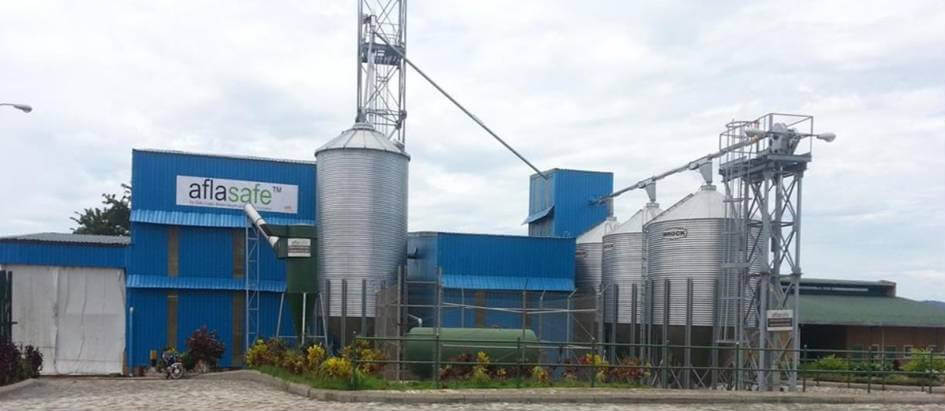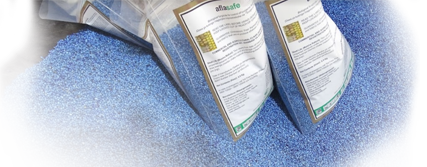The greatest danger from this relentless killer is that you cannot see, smell or taste it
LAGOS, NIGERIA, 15th March 2017 – Partners and investors in Nigeria’s groundnut and maize produce will today convene at Lagos for an Investors Forum. This is a roundtable consultation on how best to commercialise Aflasafe – one of the solutions to aflatoxin – with a view to reaching as many Nigerian farmers as possible through the agri-inputs industry.

Aflatoxin poses grave danger to human and animal health. Nigeria’s groundnut and maize produce has been locked out of lucrative external markets the country once enjoyed on account of aflatoxin levels above permissible thresholds. This has devastated what was once a golden era for the country’s groundnut exports, and maize is not faring any better. Owing to aflatoxin, Africa loses USD 450 million every year in lost trade, with all the socioeconomic ramifications that this entails.
But what is aflatoxin? Nothing new. According to National Geographic, aflatoxin has been around for a long time, but it wasn’t until a major outbreak in England in the 1960s that scientists first identified the threat. Aflatoxin is a poison produced by the fungus Aspergillus flavus. This fungus resides in soil and infects crops while they are growing on the farm. Aflatoxin contaminates a variety of staple foods including groundnuts, maize and tree nuts. In some years, up to 65% of Nigeria’s groundnuts and maize may be aflatoxin-contaminated. Its stealth is its strength, and that’s what makes aflatoxin so scary. The greatest danger from this silent killer is that you cannot see, smell or taste it. Neither can you destroy it by cooking.
One way to fight aflatoxin is by using a 100% natural biological control product, Aflasafe™, which is registered by Nigeria’s National Agency for Food and Drug Administration and Control for aflatoxin mitigation in maize and groundnuts. Aflasafe is applied when the crops are growing on the farm, offering plot-to-plate assurance because Aflasafe-treated crops are protected from aflatoxin while growing, and during storage as well.
In Nigeria, Aflasafe was jointly developed by the International Institute of Tropical Agriculture (IITA), the United States Department of Agriculture—Agricultural Research Service, the University of Bonn (Germany) and the University of Ibadan. Aflasafe is made of sorghum grains, roasted and coated with four types of Aspergillus flavus fungus that do not however produce aflatoxins. These friendly fungus types were taken from maize grains in Nigeria, and are also found in the country’s soil. This means that the fungi used to develop Aflasafe are both endemic in, and adapted to, Nigeria’s agroecosystems. The selected friendly fungi reduce aflatoxin in the farm by ‘pushing out’ their toxic cousins, thus reducing aflatoxin in crops through a process termed ‘competitive exclusion’. Nearly 14,000 farmers in Nigeria area already using Aflasafe for maize, and earning 15% more from the premium prices paid. With up to 500% return on investment for farm-based businesses and their constituent farmers, Aflasafe is an attractive value proposition for business.
“IITA is consulting key actors in agri-inputs and all along the maize and groundnut business on the best and most efficient way to produce and distribute Aflasafe to make it available and accessible to farmers across the country,” said Mr Matiéyédou Konlambigue, Managing Director of the Aflasafe Technology Transfer and Commercialization Project (ATTC). ATTC is implemented by IITA. “During this forum, we will discuss business and partnership opportunities with public- and private-sector players to attract investments in the manufacturing and distribution of Aflasafe,” he added.

Several private-sector and agri-input companies are attending the Lagos Investors Forum. Included are major agri-input manufacturers, seed and fertilizer producers, commodity associations, the public sector, commodity traders, as well as food processors. “The companies and institutions invited are key players in the maize and groundnut sector. We look to them as the experts and vehicles that will assure Aflasafe’s delivery to farmers, as well as farmer sensitisation across the country,” said Mr Peter Okomoh, ATTC’s Commercialization and Agribusiness Manager for West Africa. “ATTC is keen to contribute to the Nigerian government’s goal of zero rejection of Nigeria’s exports,” he clarified.
Following the Lagos Investors Forum, the next stop will be the federal capital, Abuja, where a memorandum of understanding (MoU) will be signed on Friday, 17th March 2017. The MoU is between IITA, the Nigerian Export Promotion Council and the National Groundnut Producers and Processors Association of Nigeria. These organisations will cooperate in implementing a new initiative − the Export Oriented Production Cluster (OPEC). OPEC aims to increase the productivity and quality of Nigeria’s groundnuts for export. This initiative could mark a small step in Nigeria’s journey to reclaim its lost pyramids of prosperity in groundnut trade. These pyramids were once a tourist attraction for their sheer grandness. Exports aside, at home, the attendant benefits of aflatoxin-free food would be immense for both food security and food safety.
- More information: aflatoxin mitigation in Africa | Follow the hashtag #AflasafeNG
- Social media: ATTC Project on Facebook | Twitter
- Business inquiries: Peter Okomoh, Commercialization and Agribusiness Manager for West Africa, ATTC Project
- Media inquiries: Njeri Okono, Communications Specialist, ATTC Project
About the ATTC Project: The Aflasafe Technology Transfer and Commercialization Project (ATTC) implemented by IITA identifies strategic options for partnership with private companies or government entities, executes those partnerships, and helps ensure the distinct Aflasafe products reach millions of farmers. The project will contribute to improved food safety and increased income for smallholder African farmers through using Aflasafe. ATTC’s target is to cover half-a-million smallholder hectares with Aflasafe in 11 countries where Aflasafe is − or is likely to soon be − a nationally registered product. These are Nigeria, Kenya, Senegal, The Gambia, Burkina Faso, Ghana, Malawi, Mozambique, Tanzania, Uganda and Zambia. ATTC’s activities are geared to increase Aflasafe’s availability and accessibility, and to improve access to lucrative aflatoxin-conscious markets for maize and groundnuts.










